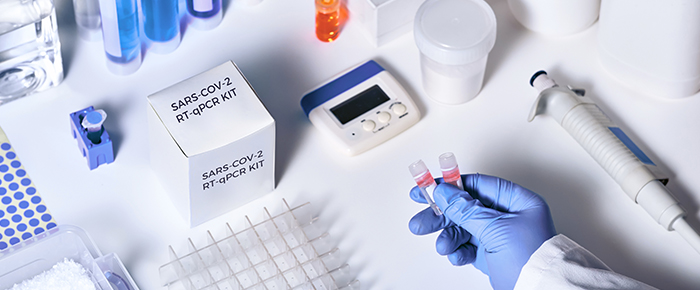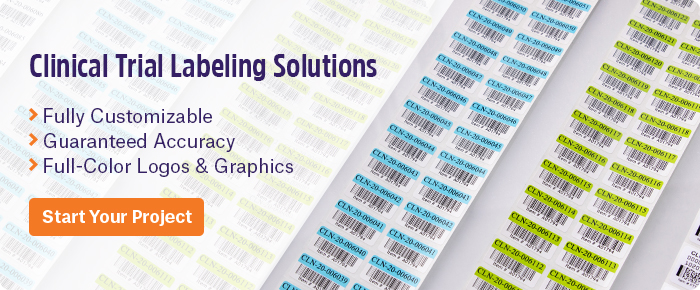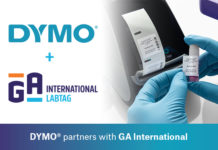
In vitro diagnostic tests have made it possible to accurately identify the specific microorganisms that cause disease and to perform additional testing to guide treatment selection. As such, diagnostic testing kits have become essential for diagnosing and monitoring disease, providing prognoses, and predicting treatment outcome. The global diagnostic market continues to grow, at a rate of 15% per year, and it forecasts to keep growing with the recent emergence of at-home diagnostic kits.
What Are Diagnostic Kits?
A diagnostic test is a medical test that is performed to diagnose or detect a specific disease or condition. This is in contrast to prognostic tests that predicts the likelihood of developing a disease or specific likely events happening during the course of that disease. These tests often come as pre-packaged test kits, which typically contain reagents and other items necessary to conduct the test to detect the presence of or to measure the levels of a given biomarker. These kits can also provide genetic information regarding mutations, deletions, and other abnormalities. Kits that test for genetic markers are often designed based on a newly discovered link between a patient genotype and the disease phenotype. Companies line Bio-Rad, Qiagen, and Abbott are some of the leaders in the diagnostic kit market.
Kits serve a variety of purposes and provide clinicians with a wide range of information, including the likelihood of a patient developing a complex disease over time, such as cancer, heart disease, and diabetes. In effect, these kits allow the physician to advise practical changes in lifestyle that may minimize future health risks or maximize preventative medical care. In addition to diagnosing disease, testing can also help determine the optimal course of treatment, specific to the patient in question. This includes more comprehensive diagnostic tests that can evaluate samples on the genomic level and can be used to analyze multiple genetic factors.
As such, diagnostic kits can serve various purposes:
- Diagnostic: These tests are used to confirm when a person has signs or symptoms of a genetic disease.
- Predictive: A predictive test is used to search for genetic mutations linked with a specific condition, and indicates a person’s propensity to develop a disease before any symptoms are present. Moreover, complementary predictive diagnostic testing may provide information about how useful a therapeutic treatment may be in treating disease, but is not required to prescribe the drug, whereas companion testing is needed to prescribe it.
- Presymptomatic: Presymptomatic tests are similar to predictive tests. These tests are used to determine risk for genetic conditions already known to be present in their family but show no symptoms.
- Pharmacogenomic: Pharmacogenomic screening is a type of genetic test that may indicate a person’s response to certain types of drug treatment. This is still only available for a limited number of drugs, including Warfarin and Tamoxifen.
Regulations & Requirements
Currently, diagnostic kits can be categorized into three groups: laboratory developed test services, in vitro diagnostic kits, and kits sold directly to consumers. Given their growing use and the fact they are now being sold to consumers directly, regulation of these kits is essential for their effective and safe use.
Diagnostic kits fall under the regulation of the U.S. Food and Drug Administration (FDA) and the Centers for Medicare & Medicaid Services (CMS). These federal bodies regulate many aspects of testing kits, particularly for those that perform genetic testing. Additional state-imposed standards for tests may vary in scope per each state. CMS also enforces strict laboratory standards for all facilities that conduct patient testing in the United States. Though these requirements are still somewhat dependent on the nature of test conducted, they may require specific levels of supervision by highly trained individuals conducting the testing.
Laboratory developed tests (LDTs) are not commercially marketed to other entities or sold as medical devices in the diagnostics market. Though the FDA has stated they believe LDTs to be “medical devices,” the laboratories that develop them argue they are more aptly described as “testing services” and should not fall under the FDA’s regulation. The FDA typically does not actively enforce most of its regulations on laboratories that offer these services. However, they do impose certain restrictions over the sale of specific reagents used in the kits to these labs. Under these regulations, the reagent manufacturers must meet the regulations rather than the laboratories themselves.
Conversely, genetic in vitro diagnostic kits are commercially marketed by medical device manufacturers as testing kits sold to laboratories, which perform the tests. They can include reagents, collection devices, and measurement apparatuses, and fall under either Class II or Class III “medical devices” of the FDA’s Federal Food, Drug, and Cosmetic Act. While Class II in vitro kits must satisfy slightly less stringent requirements, Class II devices face stringent requirements set by the FDA, including approval before sale.
In vitro kits must also meet specific labeling requirements. This includes clear and concise labeling of the immediate container as well as any inserts and the outer packaging. The container should identify the product, lot number, intended use, a statement of warning where applicable, and for reagents, concentration, storage, and manipulation instructions, as well as a means to assure that the product meets appropriate standards of purity, such as an expiration date. The outer package label should include the established product name, a summary or explanation of the test, and identify whether it’s a qualitative or quantitative test. The FDA provides further detailed instructions on labeling in vitro diagnostic kits on their site.
At-Home Diagnostic Kits
At-home diagnostic kits help people perform tests in the comfort of their house and typically provide rapid results, sometimes in as little as a minute. These kits can include health monitoring equipment that can be used to monitor blood pressure and insulin levels in diabetic patients. The increased adoption of these self-help and do-it-yourself kits is due to convenience and the ability to obtain results quickly, at an affordable cost. While doubts among end-users remain about their overall reliability, rapid testing kits, such as those for COVID-19, are increasingly being used by the public. As such, the at-home testing kit market is expected to reach $8M by 2028, with high competition in the market driving the increase.
Medical device companies continue to develop new diagnostic kits for use in the lab and at home, serving a wide range of populations. With the growing geriatric population, rising awareness of personal health, and an increased interest in human genetics, the demand for diagnostic kits is projected to grow in the coming years, driven in part by higher demand for at-home diagnostic tools. As exemplified by the demand for rapid COVID-19 testing kits, the call for at-home diagnostic tools is likely to remain high; however, the current lack of reimbursement policies and high production costs will likely create roadblocks in meeting the short- and long-term demand for these diagnostics devices.
LabTAG by GA International is a leading manufacturer of high-performance specialty labels and a supplier of identification solutions used in research and medical labs as well as healthcare institutions.


